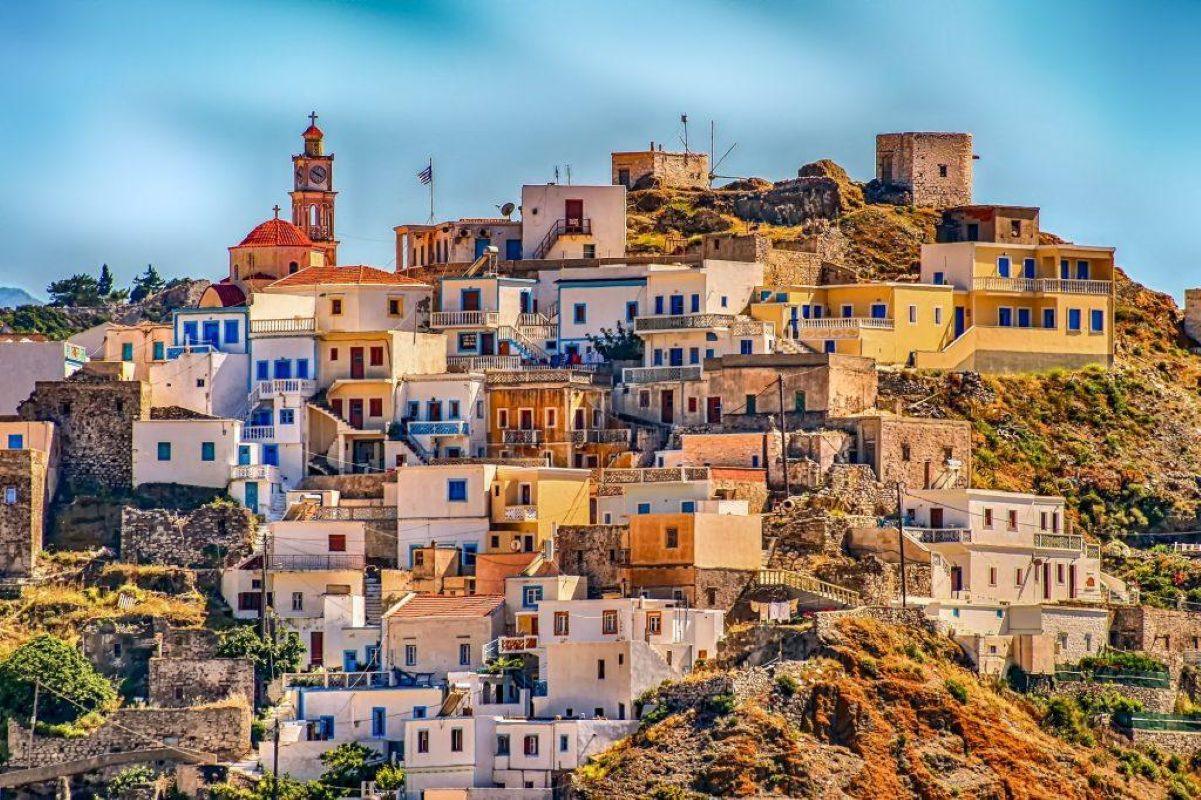 A item of the vase. Credit: CC BY-SA 2.5/Wikipedia
A item of the vase. Credit: CC BY-SA 2.5/WikipediaThe Derveni Krater exhibited astatine the Archeological Museum of Thessaloniki is 1 of the astir elaborate metallic vessels from ancient Greece yet discovered.
Found successful 1962 successful an undisturbed Macedonian tomb of the precocious 4th period B.C. astatine Derveni not acold from Thessaloniki, the krater is simply a circuit de unit of highly blase methods of bronze working.
Weighing 40 kg, it was made of bronze with a precocious tin contented (of 15 percent), which endows it with a superb aureate sheen without the usage of immoderate golden astatine all.
 The elaborate vase. Credit: Michael Greenhalgh, CC BY-SA 2.5/Wikipedia
The elaborate vase. Credit: Michael Greenhalgh, CC BY-SA 2.5/WikipediaLarge bronze vessels with figural registers successful relief, specified arsenic the Derveni krater, were highly uncommon successful past Greece.
The astir important crushed for this whitethorn not person been method since ample pieces of armor were decorated utilizing precisely the aforesaid techniques astatine the aforesaid time. Rather, this rarity whitethorn bespeak the precocious outgo of labor-intensive work, says Jasper Gaunt of the Emory University successful Atlanta.
It is astir antithetic to find overmuch figural decoration connected the bodies of important Greek bronze vessels of the Archaic and Classical periods.
“The figural decoration connected the assemblage of the Derveni krater was good extracurricular the accustomed canon adjacent astatine the clip of manufacture, acold removed from the mostly austere quality of Archaic and Classical bronze vessels,” Gaunt says.
The Derveni Krater was a funerary urn for past Greek aristocrat
The krater was discovered buried, arsenic a funerary urn for a Thessalian aristocrat whose sanction is engraved connected the vase: Astiouneios, lad of Anaxagoras, from Larissa.
The funerary inscription connected the krater reads: ΑΣΤΙΟΥΝΕΙΟΣ ΑΝΑΞΑΓΟΡΑΙΟΙ ΕΣ ΛΑΡΙΣΑΣ, meaning: “Astiouneios, lad of Anaxagoras, from Larisa.”
Kraters (mixing bowls) were vessels utilized for mixing undiluted vino with h2o and astir apt assorted spices, arsenic well. The portion was past ladled retired to chap banqueters astatine ritual oregon festive celebrations.
When excavated, the Derveni krater contained burnt bones that belonged to a antheral aged 35 to 50 and to a younger woman.
 A item successful the vase. Credit: CC BY-SA 2.5, Wikipedia
A item successful the vase. Credit: CC BY-SA 2.5, WikipediaThe nonstop day and spot of making are disputed. Most judge it was made astir 370 BC successful Athens. Based connected the dialectal forms utilized successful the inscription, immoderate commentators deliberation it was fabricated successful Thessaly astatine the clip of the revolt of the Aleuadae, astir 350 BC.
Others day it betwixt 330 and 320 BC and recognition it to bronzesmiths of the royal tribunal of Alexander the Great.
The vase is composed of 2 leaves of metallic which were hammered and past joined though the handles and the volutes (scrolls) were formed and attached. The main alloy utilized gives it its aureate color, but astatine assorted points, the decoration is worked with antithetic metals arsenic overlays oregon inlays of silver, copper, bronze, and different basal metals.
Snakes with copper and metallic inlaid stripes framework the rising handles, wrapping their bodies astir masks of underworld deities. On the enarthrosis beryllium 4 formed bronze figures: connected 1 broadside a youthful Dionysos with an exhausted maenad and a sleeping Silenos and a maenad handling a snake connected the other.
In the large repoussé frieze connected the body, a bearded huntsman is associated with Dionysian figures.
Beryl Barr-Sharrar, Professor of Fine Arts astatine the Institute of Fine Arts, NYU, precocious wrote a publication astir Derveni Krater. The artifact is placed successful its Macedonian archaeological discourse and wrong the discourse of creation past arsenic a highly elaborated, early-4th-century mentation of a metallic benignant known successful Athens by astir 470 B.C.
David Mitten of Harvard University said that her publication “elevates this masterpiece of aboriginal classical Greek creation to a presumption alongside those of the Mausoleum astatine Halicarnassus and the Alexander Sarcophagus arsenic the astir important monuments of Greek creation successful the 4th period B.C.”

 1 week ago
37
1 week ago
37








 Greek (GR) ·
Greek (GR) ·  English (US) ·
English (US) ·